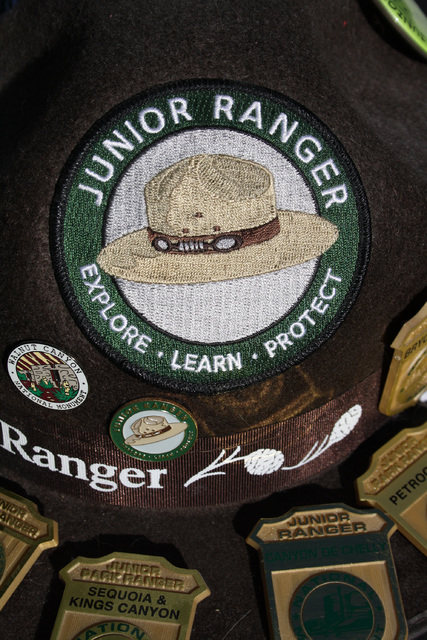
With the holidays upon us, many families will take to the road to visit national parks, recreation and conservation areas and other public lands. Children and public lands are usually a natural fit but sometimes kids need a little help to become interested. An ideal way to enhance their experience and have some fun at the same time is to take part in the Junior Ranger Program.
More than 200 parks offer the program, including dozens in the Southwest and West. It’s easy to get started. On your arrival at any park just ask at the visitor center for a junior ranger booklet. Most parks hand them out for free, such as nearby Death Valley National Park, although a few others, such as Yosemite and Zion, charge a nominal fee.
Once you have the booklet, your child can do the activities at his or her own pace. In general, the workbooks are catered to ages 4-14, with the younger ages having to only fill out a couple of pages while the older children often have to complete the entire book. Activities range from matching an animal to its tracks, to identifying plants and animals found in that park, or even writing a poem.
Once your child finishes the booklet, you take it back into the visitor center and have a ranger check it over. If the child has completed it correctly, the child is then sworn in as that park’s newest Junior Ranger. Each child will receive a badge with the park’s name on it, a certificate and sometimes a patch as well. Most children are extremely proud of this achievement and can’t wait to visit another park.
Every park that offers the program has a different booklet and badge, which encourages children to become junior rangers at many places. Although the program is designed for children, most parks — not all — don’t mind if adults take part. At the North Rim of the Grand Canyon, a park ranger told me the first thing she does on her first visit to any park is to pick up a Junior Ranger booklet. This young-at-heart ranger was in her 60s.
The program in each park emphasizes the special features found there. For example, at Lake Mead National Recreation Area, activities will teach children how the reservoirs of Lake Mead and Mohave were formed, what types of plants are native to the park and even how to identify the non-native species. They will also learn about desert soils and the cultural resources of the park.
You will find that at some parks the booklets are quite easy and can be done in and around the visitor center in less than an hour. At others, you will have to invest more time by hiking a trail or two, taking in a ranger-led program, or visiting the park’s museum.
If traveling isn’t in your plans there is still a great alternative: becoming a WebRanger. The program is free and done at your own pace on your own computer. You can print out a WebRanger ID card and start working on more than 50 activities to receive a patch.
Children will be learning about our national parks, preserves, monuments and other areas throughout the country while playing kid-friendly games, and solving mysteries and puzzles.
Some are quite easy while others very challenging but they don’t have to do everything at one sitting. Once you sign up you can track your progress and go back to where you left off at a later date. Get started at www.nps.gov.
After your child has received just one Junior Ranger badge, you will find that child has learned quite a lot and is often motivated to try for a few more. Before you know it, your child could be an enthusiastic little expert on our extraordinary park system.
Deborah Wall is the author of “Base Camp Las Vegas, Hiking the Southwestern States,” “Great Hikes, A Cerca Country Guide,” and co-author of “Access For All, Touring the Southwest with Limited Mobility.” Wall can be reached at Deborabus@aol.com.